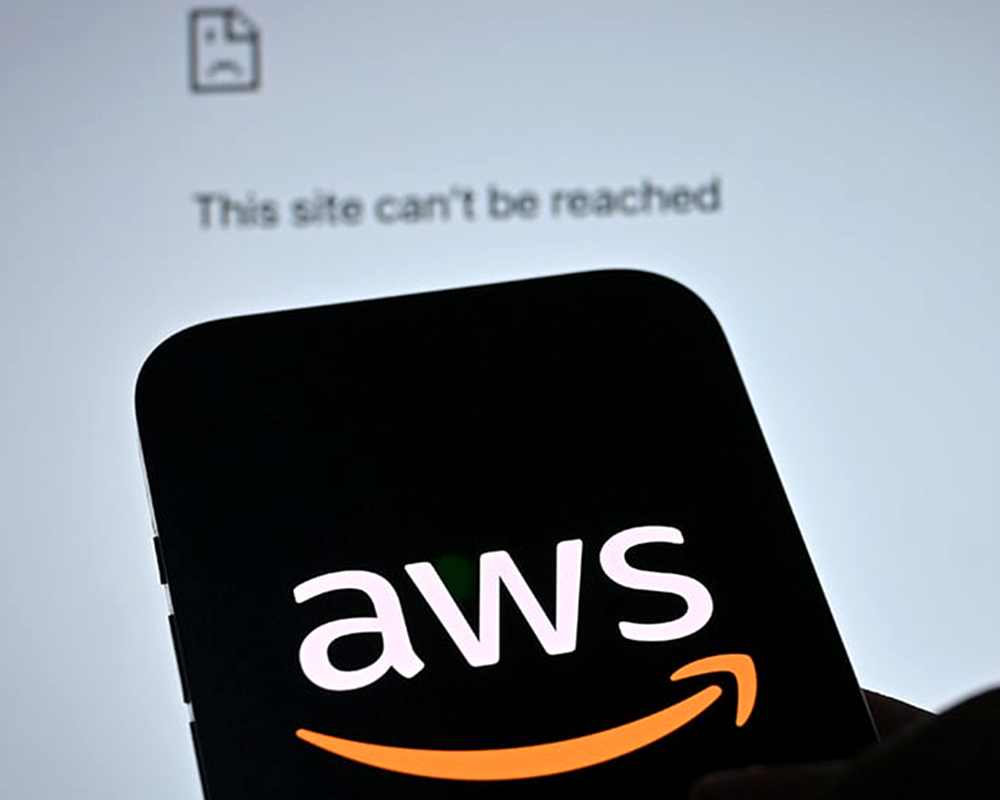October 24, 2025 By: JK Tech
On October 20, a massive outage at AWS’s US-EAST-1 region knocked out services from major brands and everyday tools. It wasn’t just a one-off glitch; it was a wake-up call for how fragile our “internet backbone” really is.
The Day the Cloud Went Dark
Early that morning, engineers detected unusual error rates in AWS’s Virginia data center, one of its most critical hubs. The issue was traced to a failure in DNS resolution for the Amazon DynamoDB API endpoint which is essentially the system that helps applications locate and connect to the right servers across the internet.
To put it simply, DNS (Domain Name System) functions as the internet’s address book. It translates easy-to-read web names (like amazon.com) into numerical addresses that machines use to communicate. When this process breaks, systems cannot find or reach one another, even though both sides are functioning. In this instance, the breakdown meant that any application relying on DynamoDB could not retrieve or send information, bringing their services to a standstill.
This was not an isolated failure. Thousands of services depend on DynamoDB for data operations, either directly or through other interconnected systems. The outage therefore rippled across a much wider network. Applications such as Snapchat, Fortnite, and several government and financial platforms experienced disruptions. Even Amazon’s own Alexa devices were affected.
In essence, it was as if the internet’s central directory suddenly went missing, so requests were being made, but the systems no longer knew where to deliver them. The event exposed how deeply modern applications depend on shared cloud infrastructure, and how a disruption in one layer can cascade across multiple services globally.
How the Cloud Holds Everything Up
We often imagine “the cloud” like it’s a virtual place floating above our photos or apps. But it’s very real, it’s rows of servers, data centres, networks, and services that many companies rent instead of owning.
For many apps, AWS isn’t just a vendor, it’s the foundation. When that foundation trembles, entire structures wobble. The outage showed us:
-
Cloud monopolies are real. A few players (AWS, Microsoft Azure, Google Cloud) dominate.
-
Single-region defaults are risky. Many services default to US-EAST-1, making that region a global “hot spot” of risk.
-
Cloud downtime isn’t “just business”, it impacts banking, government services, games, smart homes, everything.
What This Means for Businesses
For leaders, tech teams, and even everyday users, the incident has some clear lessons:
-
Don’t Assume “Always-On”: A cloud vendor’s promise of “99.99% uptime” doesn’t mean immunity from systemic issues.
-
Region Strategy Matters: If the default lies in one region and one provider, fragility builds into the architecture. Multi-region, multi-provider might feel complex, but the cost of not doing it just spiked.
-
Plan For When the Backbone Breaks: Offline modes, alternate pathways, downtime workflows may sound like insurance but are now necessities.
-
Know The Dependencies: Many services seemed independent, but when the underlying layer failed, they crashed anyway. Have clarity on what the system implicitly relies on.
Final Thoughts
The AWS outage wasn’t just an IT headache but a manifestation of how connected and fragile our digital world is. The cloud provides remarkable speed and scalability, but if everyone rides the same train track and that track breaks, the impact is shared.
Next time an app works seamlessly, remember that there’s a hidden infrastructure under the surface, keeping everything aligned and when it hiccups, we all feel it. For businesses that take architecture seriously, this is the moment to rethink resilience, not just features.



